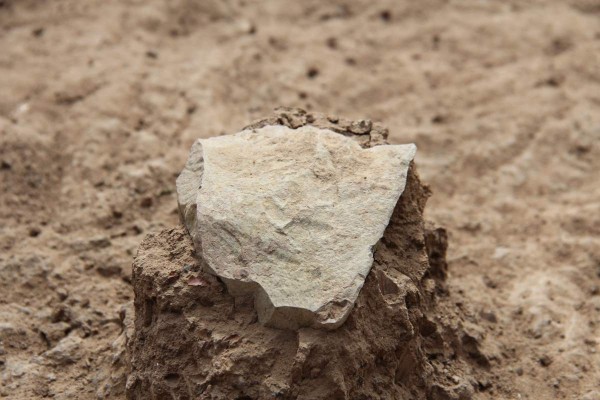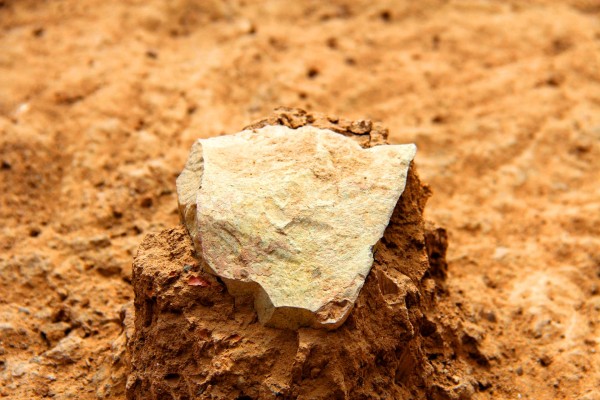
Scholars in human evolution have long predicted that the earliest stone tools were made by the Homo genus and that this technological development was directly linked to climate change and the spread of Savannah grasslands in other parts of the world especially, Africa.
The Homo genus discovered in Africa from which modern humans descended from, according to researchers, only emerged around 2.5 million years ago. That was when forests gave way to open grassland environments in Africa. Until now, it was widely assumed that environmental changes around this time triggered the shift towards a bipedal hunter-gatherer life style.
Archaeologists working in Lomekwi 3-an archeological site in West Turkana in Kenya, Africa discovered the stone tools back in 2011 and suspected that further studies on the tools will reveal certain secrets and speculations regarding human evolution.
The Turkana County is located in the former Rift Valley Province and it is the largest and also the north-western most county in Kenya. It is bordered by the countries of Uganda to the west, South Sudan and Ethiopia and it is inhabited by the Nilotic people who are believed to have migrated to the land in the 14th century probably from Ethiopia.
Due to the nature of the land, in 1988, archaeologists took interest in it and discovered four sites of Stone Age cultures which are situated on the tributaries along the west side of Lake Turkana. It is said by archaeologist that the earliest late Stone Age industries are dated up to 12,000 Before Present.
The discovery of the site where these remarkable tools have been found is said to be serendipitous because archaeologists were searching for a certain site where they can work on and accidentally discovered the Lomekwi site which is today teaching man lots of things in evolution.
Majority of the tools appear to be stones that have been struck to break off sharp-edged flakes. Others too appear to have been used as hammers or anvils for hammering unknown objects.
From historians point of view, ancient human relatives used stone tools for hammering, such as for cracking nuts, and for their sharp edges, useful for butchering and skinning animal carcasses as well as cutting up tough plant material.
According to Jason Lewis and Sonia Harmand of Stone Brook University in the State of New York in the United States, the new discovered tools are 3.3 million years old, or 700,000 years older than ones that researchers had previously discovered, making them some half-a-million years older before the known emergence of modern humans.
Jason Lewis, commenting on the importance of the tools was quoted by theguardian.com as saying “The idea was that our lineage alone took the cognitive leap of hitting stones together to strike off sharp flakes and that this was the foundation of our evolutionary success. This discovery challenges the idea that the main characters that make us human, such as making stone tools, eating more meat, maybe using language, all evolved at once in a punctuated way, near the origins of the genus Homo.”
The geologist who dated the tools- Chris Lepre works at the Lamont-Doherty Earth Observatory and Rutgers University. He was quoted as saying “It just rewrites the book on a lot of things that we thought were true, the tools have a great lessons for mankind”.
Alison Brooks, an anthropology professor at George Washington University who also examined some of the tools told tampabaytimes “It really absolutely moves the beginnings of human technology back into a much more distant past, and a much different kind of ancestor than we’ve been thinking of.”
Officially, it is not yet clear the purpose of the tool but some researchers suggest that the overall purpose was to make sharp-edged flakes for cutting but exactly how they were used is not known. Researchers are still examining the tools with a microscope to look for more answers.
Anthropologists have long thought that sharp-edged stone tools were made only by members of our branch (Homo sapiens) whose members are designated as Homo, meaning like our own species. However, that idea has been questioned recent times due to the new finding that making of these objects may have begun with smaller-brained forerunner creatures instead.
But despite the argument and the counter argument regarding which creature made the sharp objects, Nick Toth, a professor at Indiana University said it wouldn’t surprise him if the tools were made by a creature with a brain smaller than what is found in Homo. He was quoted as saying “you don’t need a very large brain … to understand the basic principles of fracturing stone”.
Some people have argued that the land of Africa, where human being is said to have originated has more secrets yet to be discovered. And it is through increase in research funding by various interested organizations that can open new ideas about how those in the past lived their lives.







